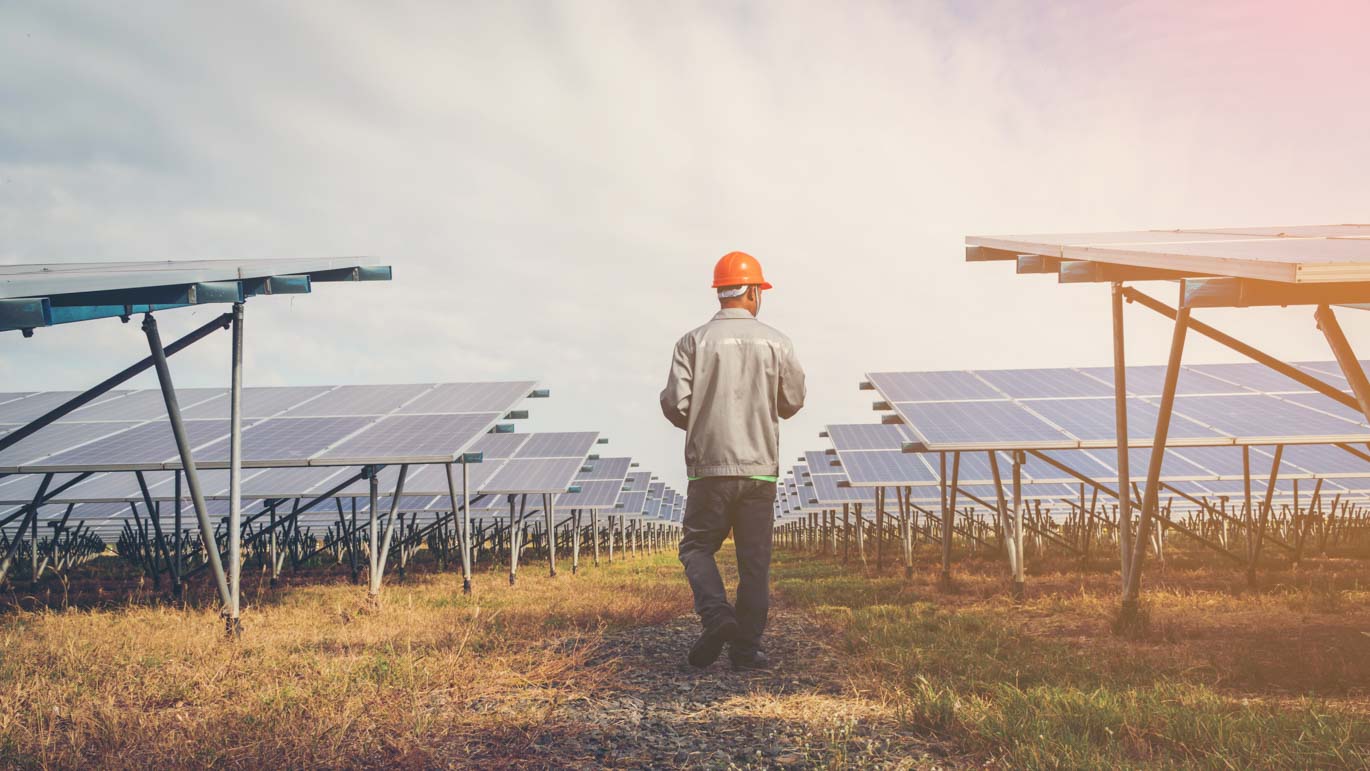 The Concord® team recently sat down with Kamel Bennaceur, a veteran engineer currently serving as the CEO of Nomadia Energy Consulting in Abu Dhabi, following a position as Chief Economist at the Abu Dhabi National Oil Company in the United Arab Emirates. He has previously served as the Director of Sustainable Energy Policies and Technologies at the International Energy Agency in Paris, France, and for over three decades held senior engineering, technology, management and economics roles at the oilfield services giant Schlumberger.
The Concord® team recently sat down with Kamel Bennaceur, a veteran engineer currently serving as the CEO of Nomadia Energy Consulting in Abu Dhabi, following a position as Chief Economist at the Abu Dhabi National Oil Company in the United Arab Emirates. He has previously served as the Director of Sustainable Energy Policies and Technologies at the International Energy Agency in Paris, France, and for over three decades held senior engineering, technology, management and economics roles at the oilfield services giant Schlumberger.
In our wide-ranging interview, Kamel explored how global economic forces are moving oil and gas companies into a more sustainable future. He discussed the role he sees for established energy companies and their capital project teams, and how renewable energy is now competing against fossil fuels on its own merits, negating the need for government incentives. He also examines the twin pressures of corporate social responsibility and environmental sustainability movements.
VELOCITY MAGAZINE: You’ve worn many hats in your career — you are an experienced engineer, you were recently working as the Chief Economist at ADNOC and you’ve worked on sustainability initiatives at the international level with the International Energy Agency (IEA). What do we need to understand to begin an informed discussion around the future of global energy development?
KAMEL BENNACEUR: Fossil fuels presently power an estimated 82 percent of our global energy system, and this is patently unsustainable. With the right policies, increased investment and the support of the world’s oil and gas companies — and their capital project teams — we will be able to change the energy mix and move to sustainable, decarbonized sources of energy. This includes renewables, nuclear and increased energy efficiency overall.
There is a global consensus that the transition away from carbon-based energy is both necessary and urgent. In September 2015, the development goals set at the United Nations Sustainable Development Summit in New York included a pledge to secure “affordable, reliable, sustainable and modern energy for all.” Three months later, at the 2015 United Nations Climate Change Conference in Paris, parties reached a landmark agreement to fight climate change and intensify global efforts to achieve a sustainable low-carbon future. The chief aim of the Paris Accord: To keep the global temperature rise to well below 2° Celsius above pre-industrial levels. So far, 195 countries have signed.
VM: Clearly, meeting these goals is going to require significant changes. What will it take to build a sustainable global energy infrastructure? More to the point, who will build it?
KB: The organizations with the expertise to build sustainable capital projects at the scale required to meet these global objectives are the world’s major oil and gas companies. They have a great deal of capital construction expertise that we will need to apply to the construction of sustainable capital projects.
For example, most of these companies have significantly reduced their cost overruns since the oil price crash of 2014, and they are more reliably hitting targets in their initial project cost and schedules. By contrast, we’re still seeing very significant cost overruns on large, complex nuclear projects. We will need to leverage everything that the oil and gas companies have learned about cost control if these sustainable projects are going to succeed on a global scale. The expertise has to come from somewhere.
VM: Are oil and gas companies taking up the challenge? Are they investing in sustainability?
KB: Most major players haven’t made the leap to significant sustainable investment, but a confluence of powerful forces is pushing them in that direction.
For starters, both shareholders and public opinion are forcing corporate social responsibility and environmental sustainability onto the agenda. We’re seeing a big push toward transparency around sustainability metrics, which means major companies are now benchmarked against one another. In this name-and-shame era, you don’t want to be the one with the worst footprint in terms of emissions per barrel, and you certainly don’t want to have the worst record in terms of other environmental impact metrics like leaks and spills.
On a practical level, that means capital project managers and the companies they work for are sharply focused on making sure their core activities are running with the lowest environmental footprint. Second, they are making sure they use the least amount of energy and water to run their own operations. And finally, we’re starting to see projects in the Middle East where companies are combining renewables with traditional energy extraction; for example, they’re using solar panels instead of gas to generate the steam they need to inject and displace the gas.
The organizations with the expertise to build sustainable capital projects at the scale required to meet these global objectives are the world's major oil and gas companies.
Kamel Bennaceur Tweet
VM: Are there any other forces at play?
KB: Classic market forces are also driving traditional energy companies to look toward a sustainable future. The global move toward a higher percentage of renewable energies creates opportunities for energy companies. In some parts of the world, electricity from solar energy has even become cheaper than electricity from natural gas and coal, so this creates a natural market incentive for these companies to get in on the game.
The Atlantic Council council recently published a very good paper on the movement of major players in oil and gas into the energy transition arena; it analyzed both their acquisitions and investment in technology. Companies like Chevron in Australia, Total in France or ADNOC and Saudi Aramco in the Middle East are investing in carbon capture and storage, areas that might once have seemed peripheral to their operations. Ultimately, the fact is that fossil fuel use is expected to decline significantly, and if these companies want to remain resilient in a low-carbon energy future, they’ll need to develop less carbon-intensive portfolios. Today, we even see large companies like Total and Shell using the 2° Celsius benchmark from the Paris Accord to predict what their production profiles will look like in the future.
VM: What about government incentives? What role have they played in the past, and will that role continue in the future?
KB: In countries like Denmark and Germany, renewable energy is already a large part of the electricity market. That’s because, in these markets, there have historically been government incentives. Now, however, we’re beginning to see a more level playing field where renewables compete on their own business merits. That’s certainly the case for solar, and it will become the case even more so when we resolve questions around intermittency and the availability of energy storage.
VM: What needs to happen next?
KB: We’ve seen some extraordinary technological developments on the solar side, but renewable energy alone won’t allow us to meet our global climate goals. The other major component of de-carbonization is energy efficiency and the use of carbon capture and storage.
Moving the needle on this will require further investment, but if we look at investment levels in research and development (R&D), we are very far from what other industries invest. When compared to the IT and pharmaceutical industries, for example, investment in energy-related R&D is lagging by at least one order of magnitude. One analysis I saw recently suggested that if you add up all of the money we’re investing globally into R&D for clean energy, it would equal the amount that the top three tech companies alone invest in R&D each year. So that’s the first issue: We need more investment.
VM: What is the best way to encourage investment?
KB: It’s clear at this point that it’s a price on carbon. Today’s CO2 prices — even in markets like the EU — are not at the level that is high enough to justify an investment. Certainly, higher carbon prices would provide the needed incentive.





